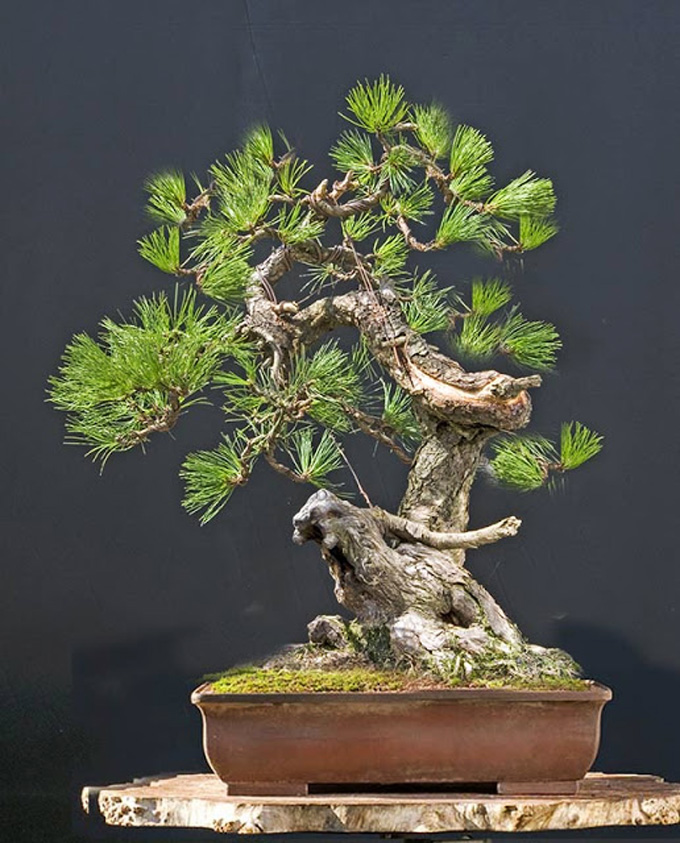 An old European black pine after the first styling by Walter Pall and friend. Though we don’t often lead with unrefined trees, it’s hard not to give Walter Pall first billing when it comes to European natives. Here’s what Walter has to say about this tree: “the foliage of black pines is quite coarse and it is perfectly normal for them to look kind of raw after first styling… After a few years it will get much better.” He also says “The tree will take ten to fifteen years to be ready for exhibit. Such is bonsai life.” Walter has a whole series of Pinus nigra featured in his gallery and on his blog.
An old European black pine after the first styling by Walter Pall and friend. Though we don’t often lead with unrefined trees, it’s hard not to give Walter Pall first billing when it comes to European natives. Here’s what Walter has to say about this tree: “the foliage of black pines is quite coarse and it is perfectly normal for them to look kind of raw after first styling… After a few years it will get much better.” He also says “The tree will take ten to fifteen years to be ready for exhibit. Such is bonsai life.” Walter has a whole series of Pinus nigra featured in his gallery and on his blog.
European black pine, aka Austrian black pine (Pinus nigra in either case)
After spending several hours dragging the web for good photos of European (Austrian) black pines, I have come to the realization that top notch Pinus nigra bonsai are not all that common (especially if you leave Walter Pall out of the mix). Though I’m sure there are more good ones out there, the ones shown here amount to a pretty good start.
It’s hard not to notice how striking the bark is on these trees is with its scaly, often deeply fissured greyish to reddish hues. Bark like this is a big plus if you’re looking for attractive aged-looking bonsai. Conversely, you might notice how long and shaggy the needles are in some of the photos. Reducing needle size takes expertise and patience, and even with expertise and patience, European black pine needles don’t always cooperate all that well.
According to Wikipedia the European black pine (Pinus nigra) species is divided into two sub-species and then further into three varieties each (six varieties total). Based on names of the varieties (European black pine, Austrian black pine, Turkish black pine, Crimean pine, Atlas Mountain black pine etc), geography seems to be the most important factor in distinguishing one from another. There’s more that can be said, but I’ll leave the rest up to you, except to say (because for some reason it’s missing in the Wikipedia article) that like its famous cousin, the Japanese black pine, it has two needles per bundle.
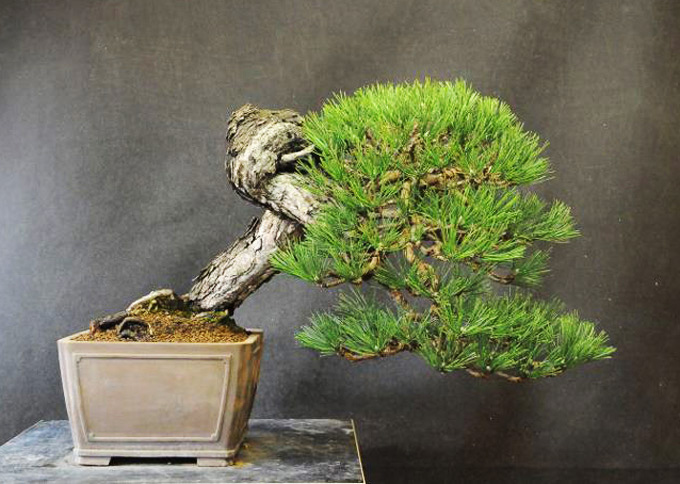 This one is belongs to Mauro Stemberger (a familiar name to readers of this blog). He calls it “the loop.” I wonder if this is the best view. It seems that it would be better if it were turned a little counter-clockwise. Though I suppose if it were turned too far, you couldn’t see the loopness of the loop. Maybe if the trunk were left like it is and the foliage was push (twisted) counter-clockwise some, so it’s not coming straight at you and partially obstructing the loop. No matter, it’s a great tree, just like so many others in Mauro’s collection.
This one is belongs to Mauro Stemberger (a familiar name to readers of this blog). He calls it “the loop.” I wonder if this is the best view. It seems that it would be better if it were turned a little counter-clockwise. Though I suppose if it were turned too far, you couldn’t see the loopness of the loop. Maybe if the trunk were left like it is and the foliage was push (twisted) counter-clockwise some, so it’s not coming straight at you and partially obstructing the loop. No matter, it’s a great tree, just like so many others in Mauro’s collection.
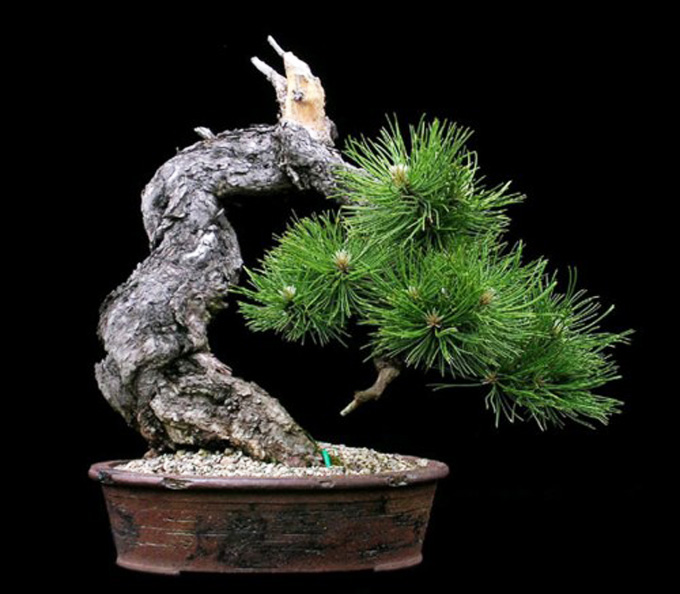 I lifted this photo from a previous Bonsai Bark post titled Putz Pines, so I might as well lift the caption too: The rugged and somewhat worn look of the pot mirrors the well-aged bark and overall rugged feel of this European black pine (Pinus nigra Austriaca). It’s from Wolfgang’s Bonsaigalerie (a click well worth making).
I lifted this photo from a previous Bonsai Bark post titled Putz Pines, so I might as well lift the caption too: The rugged and somewhat worn look of the pot mirrors the well-aged bark and overall rugged feel of this European black pine (Pinus nigra Austriaca). It’s from Wolfgang’s Bonsaigalerie (a click well worth making).
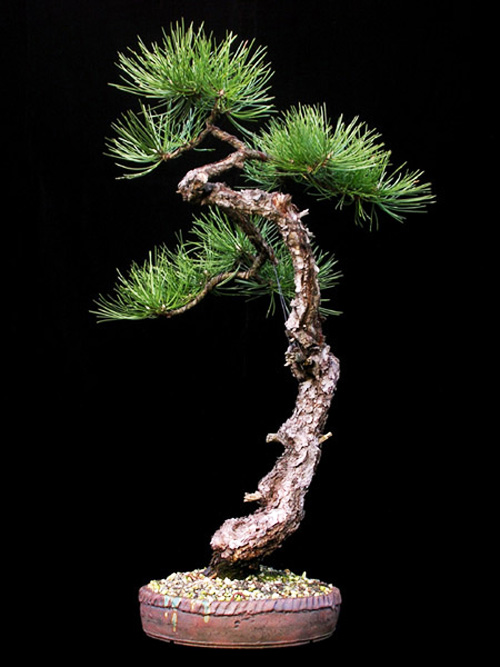 This shaggy needled bunjin style tree by Wolfgang Putz is from the same Bonsai Bark post as the one above. And just like the one above you could say
This shaggy needled bunjin style tree by Wolfgang Putz is from the same Bonsai Bark post as the one above. And just like the one above you could say
“The rugged and somewhat worn look of the pot mirrors the well-aged bark and overall rugged feel of this European black pine.”
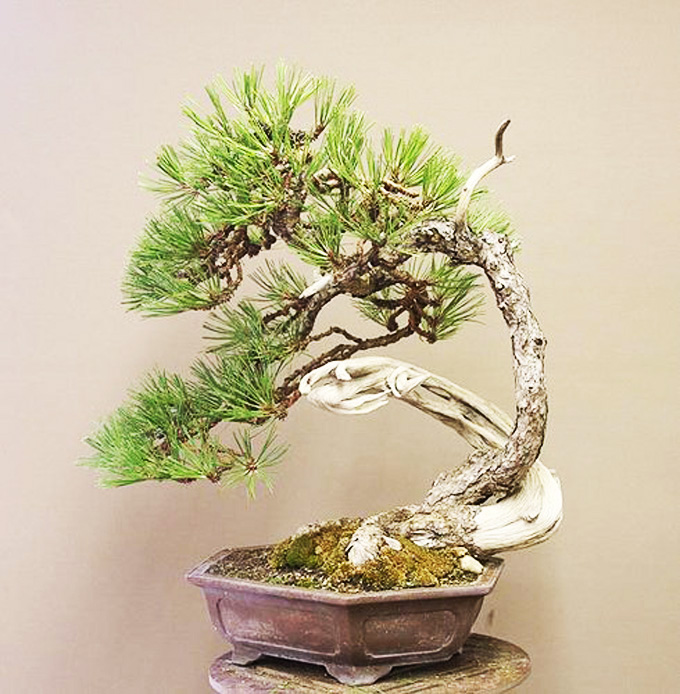 This one would be interesting even without the striking wraparound deadwood with its misshaped fingers (thumb and all). With the deadwood, it becomes a unique and unforgettable bonsai. It belongs Karl Thier as does the one below. I found them both and some other worthy European black pines by Karl Thier here.
This one would be interesting even without the striking wraparound deadwood with its misshaped fingers (thumb and all). With the deadwood, it becomes a unique and unforgettable bonsai. It belongs Karl Thier as does the one below. I found them both and some other worthy European black pines by Karl Thier here.
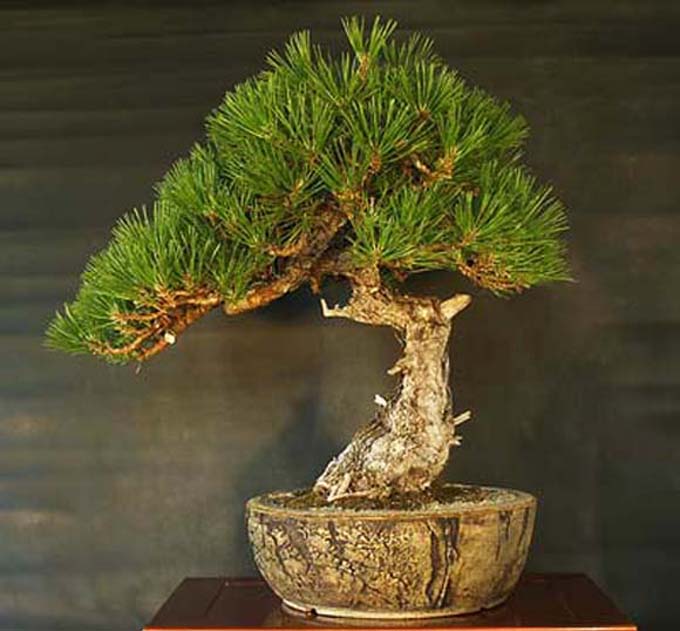 Another one by Karl Thier. Aside from the strong, well tapered little trunk, what catches the eye on this otherwise fairly ordinary bonsai, is how well the texture and color of the bark goes with the texture and color of the pot (like with the two Wolgang Putz trees above). Now, if it were only a little shallower.
Another one by Karl Thier. Aside from the strong, well tapered little trunk, what catches the eye on this otherwise fairly ordinary bonsai, is how well the texture and color of the bark goes with the texture and color of the pot (like with the two Wolgang Putz trees above). Now, if it were only a little shallower.
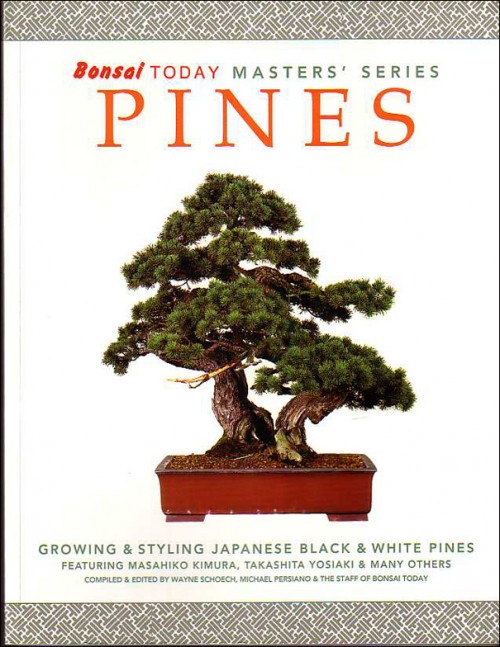 Speaking of needle reduction and a whole host of other techniques that can be applied to almost any pine, here’s the definitive book on pine bonsai.
Speaking of needle reduction and a whole host of other techniques that can be applied to almost any pine, here’s the definitive book on pine bonsai.
Nice! I think I like the Austrians here better than many Japanese I have seen (I like the natural, less “overgroomed” appearance.
Walter’s right when he says it will take up to fifteen years to develop and refine his tree. European and Japanese black pines are similar only in name and needle count. The reason there are so few P.nigra exhibition bonsai is because they take longer than forever to develop adventitious buds – more like a stubborn white pine than Japanese black. But hey – Walter’s still a young man…
At the Mid-America Show in August 2010 (I believe,) I saw two shohin pine that, from the short needle length, I at first assumed to be JBP. Nope — European black, a.k.a. Austrian! I was quite surprised.
I wish now I could remember whose they were.
It is always a pleasure to see Walters work. After taking a workshop from him several years ago I have kept track of him . He will be in the US next April at the LSBF Convention in New Braunfels, TX and I will certainly be taking multiple workshops from him. Thanks for the post. Maybe he can give us some direction on our wild Ashe Juniper.
What is wrong with the last presentation by Karl? That pot’s texture and color match beautifully and the shape balances the pine well. Shallowness for shallowness’s sake is vastly overrated. It seems to be a Japanese preference and if we are in a discussion to develop an American esthetic then depth of pot is open for discussion. That pot in a shallower version would not look as nice and would not serve the tree as well.
Since most of us are not professional growers, watering a shallow pot is problematic. I think most of us will opt for a live tree rather than a “proper Japanese shallow” pot. Especially when the deeper pot looks better to our eye.
Thanks for your insightful comments Zack.
There is always room for divergent views to be sure and to diverge back at you, I might add that looks better to the eye is subjective and that watering might be easier in shallower pot, depending on climate, soil etc.
As far as the anti-Japanese bonsai opinions are concerned… well, they are certainly not unusual.
Thanks Colin,
That goes a long ways in explaining why there seem to be so few really good ones. Even in the case of Walter’s impressive collection, so many are still in various stages of development (ie not ready for show time).
And hey, if Walter’s young, I wonder if I still qualify…